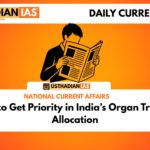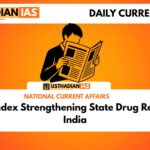Cabinet Approval for Rabi Subsidy
Cabinet Clears Fertiliser Subsidy Boost for Rabi 2025–26: The Union Cabinet has approved the Nutrient Based Subsidy (NBS) rates for Rabi 2025–26, ensuring the continued supply of Phosphatic and Potassic (P&K) fertilisers to Indian farmers at affordable prices. The approval covers the period from 1 October 2025 to 31 March 2026, targeting essential fertilisers such as Di-Ammonium Phosphate (DAP) and NPKS grades containing Nitrogen (N), Phosphorus (P), Potash (K), and Sulphur (S).
The total financial outlay sanctioned for this phase is ₹37,952.29 crore, reflecting a proactive step to stabilise agricultural input markets during the Rabi season.
Subsidy Allocation and Implementation
The newly approved amount represents an increase of ₹736 crore over the Kharif 2025 subsidy allocation. This rise accounts for global price fluctuations in fertiliser raw materials such as phosphoric acid and ammonia.
A total of 28 grades of P&K fertilisers are covered under this scheme, ensuring smooth distribution through manufacturers and importers. Farmers will thus continue to receive fertilisers at subsidised prices, enabling steady sowing operations across India.
Static GK fact: The Department of Fertilizers, under the Ministry of Chemicals and Fertilizers, oversees the implementation of the NBS scheme across India.
Understanding the NBS Scheme
The Nutrient Based Subsidy (NBS) Scheme was introduced on 1 April 2010 with the objective of ensuring the balanced use of plant nutrients and promoting sustainable soil health. Instead of fixing prices, the scheme provides per-kg subsidies for key nutrients—N, P, K, and S—based on international price trends.
Under the system, the subsidy is transferred directly to fertiliser companies, allowing farmers to purchase products at reduced rates. The rates are revised periodically to reflect market dynamics and maintain affordability.
Static GK Tip: India is the second-largest consumer of fertilisers in the world, after China, with agriculture contributing nearly 18% to the nation’s GDP.
Benefits to Farmers and the Agricultural Economy
The approval for Rabi 2025–26 will ensure a timely and adequate supply of key fertilisers for crops like wheat, mustard, pulses, and barley. By cushioning farmers against price volatility, the scheme supports rural livelihoods and food security.
Other significant benefits include:
- Maintaining stable fertiliser markets throughout the Rabi season.
- Reducing cost burdens on small and marginal farmers.
- Aligning domestic policies with global fertiliser price movements.
- Supporting balanced nutrient application for improved soil fertility.
Static GK fact: The Rabi season in India typically runs from October to March, with major producing states including Punjab, Haryana, Uttar Pradesh, and Madhya Pradesh.
Policy Impact and Future Outlook
The Cabinet’s decision strengthens India’s agricultural resilience by guaranteeing fertiliser access amid global supply uncertainties. With continued policy support and periodic rate revisions, the NBS framework ensures both economic stability for farmers and environmental sustainability for long-term soil productivity.
Static Usthadian Current Affairs Table
Cabinet Clears Fertiliser Subsidy Boost for Rabi 2025–26:
| Topic | Detail |
| Scheme Name | Nutrient Based Subsidy (NBS) Scheme |
| Launch Date | 1 April 2010 |
| Implementing Body | Department of Fertilizers, Ministry of Chemicals and Fertilizers |
| Applicable Fertilisers | Phosphatic and Potassic (P&K) fertilisers including DAP, NPKS |
| Season Covered | Rabi 2025–26 (1 Oct 2025 – 31 Mar 2026) |
| Total Subsidy Approved | ₹37,952.29 crore |
| Increase Over Kharif 2025 | ₹736 crore |
| Number of Fertiliser Grades Covered | 28 |
| Major Crops Benefited | Wheat, Mustard, Pulses, Barley |
| Key Objective | Ensuring affordable fertiliser supply and balanced nutrient use |








